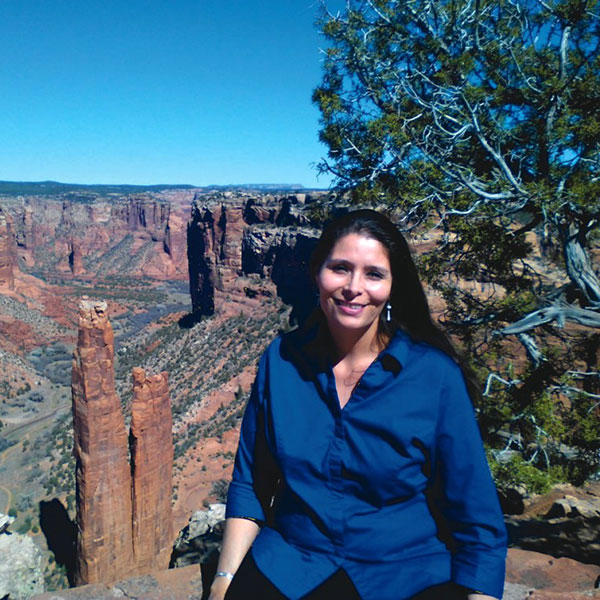For Sonlatsa “Sunshine” Jim-Martin, food is an important topic of discussion. The 1994 graduate (and parent to Zunneh-bah Martin ’19) grew up on the Navajo Nation near Tohlakai, New Mexico — making her a first-hand witness to the nutritional deficit experienced by many Native Americans.
Journey starts with CC
Her studies at CC were the start of her journey to help her people help themselves. She credited Roberto Garcia, former director of admission, for paving the way for her and other Native American students. “He actively recruited me, coming out to the reservation to visit. He let us know that there was a support system for us to succeed [at CC]. Had he not encouraged me, I feel I could not have succeeded. He was like family.”
Another big impact on her CC experience was playing for the Lady Tigers NCAA Division 3 basketball team. It gave her an opportunity to appreciate the possibilities of health and physical wellness, and currently helps her teach Native American youth about the benefits of being a college athlete.
After graduating with a degree in anthropology and a minor in Southwest Studies, Jim-Martin traveled to Oklahoma and Montana. Spending time on tribal lands in each state, she observed the programs and systems that were in place, and determined to make a difference on her own. She went back to New Mexico, and began work on tribal policy development, first in human resource management, then in tribal education, and on to social services and public health. The latter introduced her to the nonprofit aspect of public health, and that is where she found her home, working to reduce food insecurity within the Navajo Nation.
Addressing health disparities in the Navajo Nation
Now as the program manager for the Centers for Disease Control and Prevention-funded Racial and Ethnic Approaches to Community Health (REACH) grant, Jim-Martin plans and institutes programs that address health disparities in the Navajo Nation.
Data from the United States Department of Agriculture identifies nearly all of the Navajo Nation as a “food desert” — an area that is without access to fresh, healthy, and affordable foods. For the Navajo, this food desert spans about 27,000 square miles. Jim-Martin said people there live in a feast-to-famine pattern. “Because the area is poor, most people are on assistance, so when the money comes in, they feast on foods that don’t have a lot of nutrition. When they run out, they eat very unhealthy, mostly things high in starches. People just try to make it day by day.”
The direction Jim-Martin is taking the Navajo Nation is one that makes sense to her, given her studies and experience — including those from CC. In particular, she said the passion her advisor Mario Montaño, associate professor of anthropology, expressed for food and anthropology allowed her to consider options and resources in new ways.
Foods that Navajos lived on prior to colonialism, she said, are vital to their well-being. Plants and herbs that are wild and grow naturally and organically can increase the overall health of the people. “Wild game and hunting, restoring knowledge of how to do it and the traditions that surround it — those are important things. … Sheep, although a relatively new source of protein, have become traditional. It’s not as healthy as deer meat, but it’s better than starches.”
We work on making the mind, body, and spirit healthy, she explained. “You can’t think clearly if you aren’t getting proper nutrition. My passion is to reintroduce indigenous foods to the Navajo Nation. Good nutrition, and a re-establishment of cultural traditions are keys.”
“Personally, I’m an activist,” added Jim-Martin. “I’m involved in social justice work. I also grew up in poverty, so I know that the issues are very complex.”
